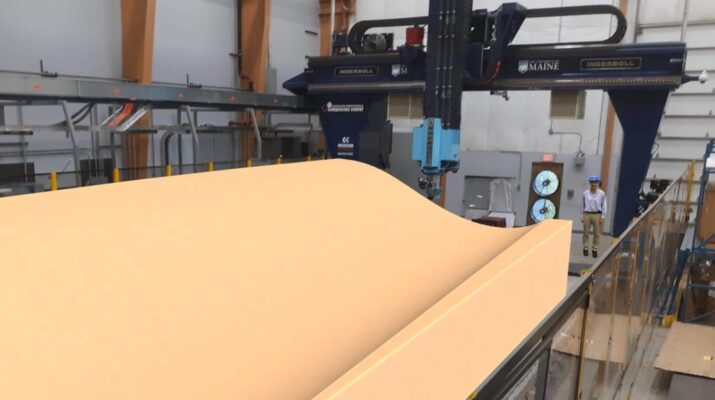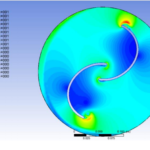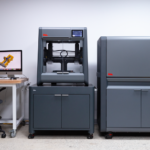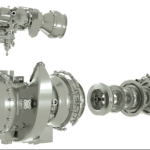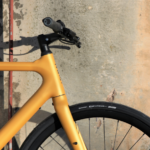

As global society shifts to renewable energy, there will likely be efforts to make the production of wind turbines faster and more efficient. Fortunately for those involved, 3D printing will be advancing alongside these efforts, opening up new methods for making these massive components. At the forefront of this development is the University of Maine (UMaine), which has been awarded $2.8 million from the U.S. Department of Energy Office of Energy Efficiency and Renewable Energy to 3D print wind blade molds using the world’s largest polymer 3D printer.
In helping Ingersoll to develop the MasterPrint system, UMaine was able to achieve not only the Guinness World Record for largest polymer 3D printer, but also the biggest solid 3D printed item when it used that machine to produce the world’s largest 3D printed boat. It makes sense then that the UMaine Composites Center will be applying this technology to another massive application: wind turbine blades.
To overcome cost and time issues associated with wind turbine production, the UMaine team will be 3D printing molds made from recyclable bio-based materials. As it stands, molds and tooling for blades can cost over $10 million, with time-to-market often stretching between 16 and 20 months. By 3D printing molds, these numbers can be cut significantly.
“Very large wind blade molds will be printed on the world’s largest polymer 3D printer located at the UMaine Composites Center using recyclable bio-based materials reinforced with wood,” said Habib Dagher, UMaine executive director of the Advanced Structures and Composites Center. “By combining cutting-edge 3D printing manufacturing with bio-based feedstocks, our team estimates that new blade development costs can be reduced by 25% to 50% and accelerated by at least 6 months. Molds produced using these materials can be ground up and reused in other molds, making them a more sustainable solution.”
The university has already partnered with Oak Ridge National Laboratory (ORNL) to develop cellulose nano fiber (CNF)—wood material—for 3D printing. By combining CNFs with polymers, the university team suggests that it’s possible to cut the cost of feedstocks from $5 for carbon fiber reinforced ABS feedstock to $2 for bio-based feedstocks. The mechanical properties of the material, however, are still similar to those of aluminum.

Teaming with UMaine on the project are TPI Composites and Siemens Gamesa (SGRE), a Spanish-German company resulting from a merger between Siemens Wind Power and Gamesa Corporación Tecnológica. SGRE manufactures the largest wind turbine in the world, the SG 14.0-222, competing with the likes of the General Electric Haliade-X and the MHI-Vestas V164. TPI makes about 18 percent of the world’s wind blades. Also involved are Ingersoll, maker of the 3D printer, and Techmer PM, the producer of the materials.
UMaine will also partner once again with ORNL on a related project in which ORNL will apply robotic deposition of continuous reinforcing fibers to wind blades, paid for by a $4 million award. The molds will feature 3D printed heating elements that make it possible to maintain the proper surface temperatures, in turn reducing fabrication time and cost.
While UMaine and its partners work on this project, GE Renewable Energy is aiming to use COBOD’s concrete 3D printing technology for the production of base structures for its wind turbines on site, similarly reducing time and costs. Other areas where we may see 3D printing used for wind power may include optimized metal components, carbon fiber reinforced blades, and the use of concrete 3D printing to produce formwork for wind turbine structures.
Given the ongoing collapse of our ecosystem, a rapid shift to renewable energy is obviously dire. However, in the process of such a transition, it’s necessary to maintain awareness of the ecological destruction that results from even the production of renewable energy sources, such as wind power.
While wind turbines produce clean energy and their embodied lifecycle emissions are a fraction of those associated with fossil fuels (0.02 to 0.04 lbs of carbon dioxide equivalent [CO2e] per kilowatt-hour [kW-hr ] compared to 0.6 to 2 lbs CO2e/kW-hr for natural gas and 1.4 and 3.6 lbs CO2e/kW-hr for coal), they do disturb the local habitat and can disrupt the behavior of birds and bats. Additionally, disposal of turbine blades has become a problem as we attempt to find ways to recycle them when they outlive their use.
With all of this in mind, there’s some hope that the 3D printing methods being promoted by UMaine and ORNL will aid in improving the sustainability of wind turbine production. It’s worth noting, however, that, though Siemens and GE may be attempting to improve their renewable divisions with 3D printing, they still maintain oil and gas divisions that offset the work they do in terms of sustainability to some degree.
When it comes to 3D real estate visualization in the USA, our service provides the perfect solution for bringing property listings to life. Through our platform, you can easily access cutting-edge 3D renderings that showcase your real estate projects in a way that attracts potential buyers and investors. Whether it's residential, commercial, or mixed-use properties, our team of experts uses advanced technology to create immersive visualizations that highlight the best features of your property, making it easier for clients to imagine the space as their own.
Through our website, you can quickly get high-quality 3D real estate visualizations that are tailored to your specific needs. With our help, you'll stand out in the competitive real estate market by offering potential buyers a realistic, interactive view of your property. Our efficient process ensures a fast turnaround time, while our attention to detail guarantees that every aspect of the property is represented accurately, giving you a powerful marketing tool to promote your real estate listings.


